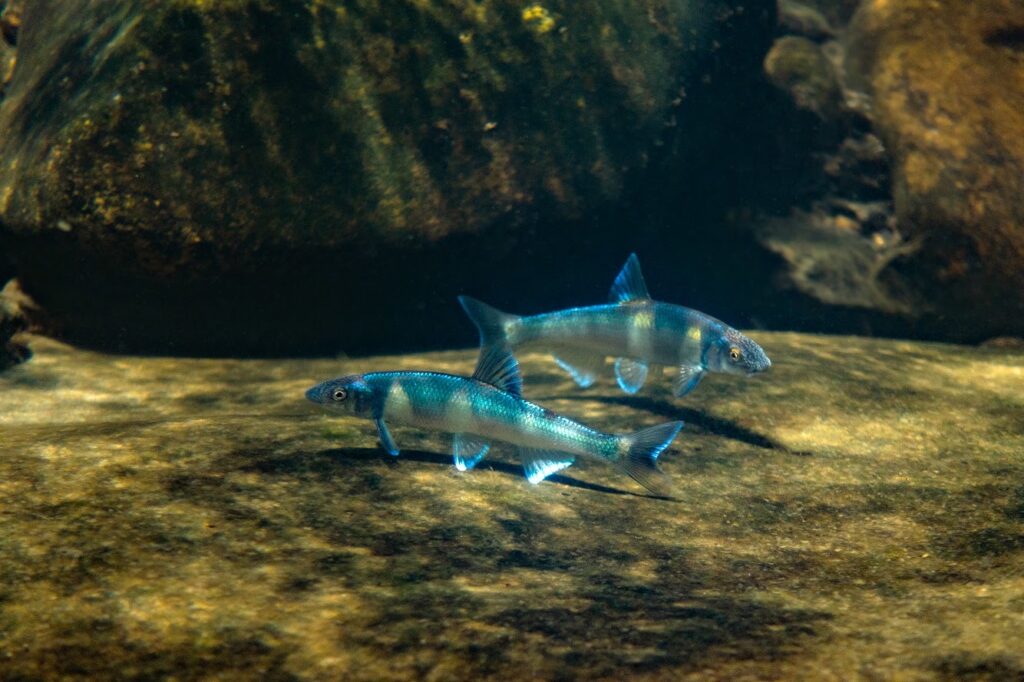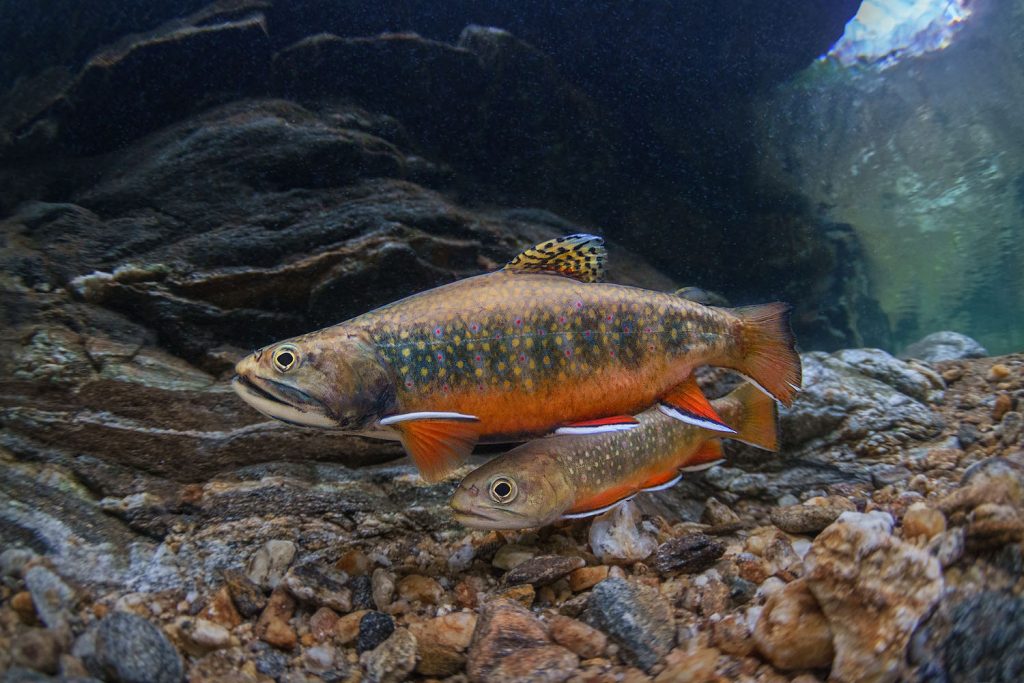Species Profile: Spotfin Chub

Two male Spotfin Chubs sparring to “own” a preferred spawning site. Photo by Derek Wheaton of Conservation Fisheries, Inc.
Spotfin chub (Erimonax monachus) – Federally Threatened Species
One fish, two fish, red fish, Wow! What’s that blue fish! There are very few freshwater fishes as striking as a Spotfin Chub, Erimonax monachus, in breeding colors. Spotfin Chubs are found only in the Tennessee River drainage and have a spotty distribution that includes the Little Tennessee River and tributaries in North Carolina and Tennessee, the Holston River in Southwest Virginia, the Emory River and tributaries, and the Buffalo River in Tennessee. Several populations are known to have been extirpated and some of these are the focus of ongoing (and apparently successful!) recovery efforts.
Spotfin Chubs are most often found in shallow areas in the river with bedrock and swift current. They are not very tolerant of silt and sedimentation, which is likely why some of the historic populations disappeared. The males (which, by the way, are the ones that display the electric turquoise blue coloration) stake out crevasses in the bedrock and vigorously guard these sites in hopes of attracting females with whom they will spawn.
If successful in attracting a mate, spawning will result in eggs that are deposited deep into the cracks in the rock where predators cannot easily reach them. Spawning takes place throughout much of the summer and the males continue to guard these sites, attracting more and more females that add to the growing nest. As the eggs hatch, the larvae tend to move into the slower water, often over fine sand where they grow from about an eighth of an inch to maybe an inch or more during their first year of life.
Spotfin Chubs are currently listed as Federally Threatened under the Endangered Species Act (ESA). This designation results in a Recovery Plan that describes recovery actions that, if successful could justify removing them from the protection of the ESA. According to the Spotfin Chub Recovery Plan’s recommended actions, there are several projects currently underway to restore populations into streams or stream reaches where they have disappeared. If some of these restored populations continue to show the success that appears to be effective, this remarkable fish may soon be able to be removed from that ESA list altogether.
So, next time you are in one of their streams, keep a lookout for a brilliant flash of turquoise under the water. Then, you may remember that Blue Fish you see is a Spotfin Chub!
Profile by J. R. Shute of Conservation Fisheries, Inc. Photo by Derek Wheaton of Conservation Fisheries, Inc.
This post is part of a series on the aquatic species of the Little Tennessee river basin by members of the Little T NFCP. To see all species profiles, click here. Please contact us if you’re interested in contributing!

